 Otajan Tura entrance
Otajan Tura entrance The Otajan Tura Complex
The Otajan Tura Complex Replicas of original Khazerasp Gates
Replicas of original Khazerasp Gates Chadra Hauli before restoration
Chadra Hauli before restoration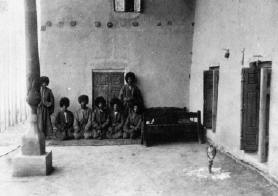 Life at the palace, from "Khiva caught in time"
Life at the palace, from "Khiva caught in time"
 The crypt entrance
The crypt entrance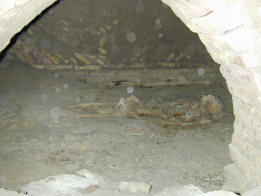 The remains of Otajan Tura
The remains of Otajan TuraIn Gandimyan itself the principal tourist attraction is the residence of Mohammed Rakhim Khan II's brother, Otajan Tura. When General Kauffmann's troops advanced on Khiva in 1873, the Khan fled to Gandimyan and it was here that the treaty was signed which marked the handover of the Khanate into Russian and then into Soviet hands. Today Otajan Tura's residence remains in fairly good condition despite showing signs of the rising salt damp which afflicts many of Khiva's buildings. It includes a mosque, a mausoleum and small madrassah with aywans that are said to display Hindu symbols carved by the descendants of Indian artisans brought to Khiva by Pakhlavan Mahmoud.
Nowadays the main building has been appropriated by wood carvers who may be reluctant to allow access to the rest of the complex. However don't be dissuaded, for past the wood carvers workshop there are steps leading down to the pitch blackness of Otajan Tura's tomb. For those wanting an intrepid 'Indiana Jones' experience, bring a torch to catch a glimpse of the moudering skeleton of the Khan's brother. Rumour has it that there is a secret underground passage which leads from here all the way into the Ichan Kala.
Next door to the complex there is a 'homom' (bath house) which includes communal and private rooms as well as a Russian style sauna.
A couple of miles further along the road in the midst of orchards that once belonged to rich 'Begs' (rich people) lies the unusual Chadra Hauli. Rising above the surrounding trees, the Chadra Hauli stands tall with its four storied aywans facing north to catch the merest hint of breeze during Khiva's hottest months. The whole structure is reminiscent of the watch tower in the Kunya Ark but its height was not primarily for spying out potential bandits. Rather the Chadra Hauli was built by a rich merchant who wanted a peaceful and airy residence. The enclosed walls of the Ichan Kala became unbearable in the summer heat and those with the means would escape to a holiday home in the country.
Originally the Chadra Hauli boasted stables at ground level with lavish living quarters on the first and second floors. However today the only occupants are nesting birds and the whole structure is enveloped with the sleepy feel of neglect. Although locked, there is usually someone nearby who can provide a key although the aging staircases are rickety and even verging on dangerous.
After enjoying Chadra Hauli's spectacular views, the nearby pool offers a pleasant picnic spot. The original 'hauz' was moved away from the Chadra Hauli when the structure began to succumb to rising damp.
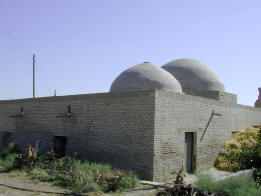 Old Homom
Old Homom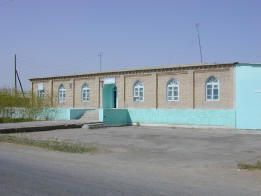 New Homom
New Homom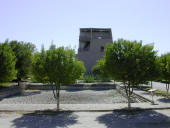
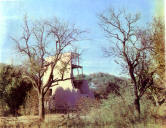
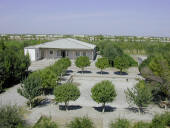 The view from Chadra Hauli
The view from Chadra Hauli


